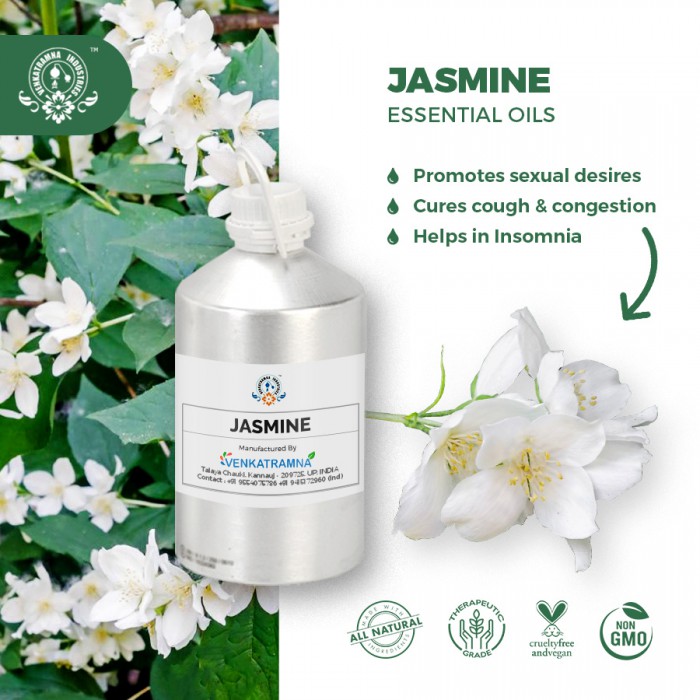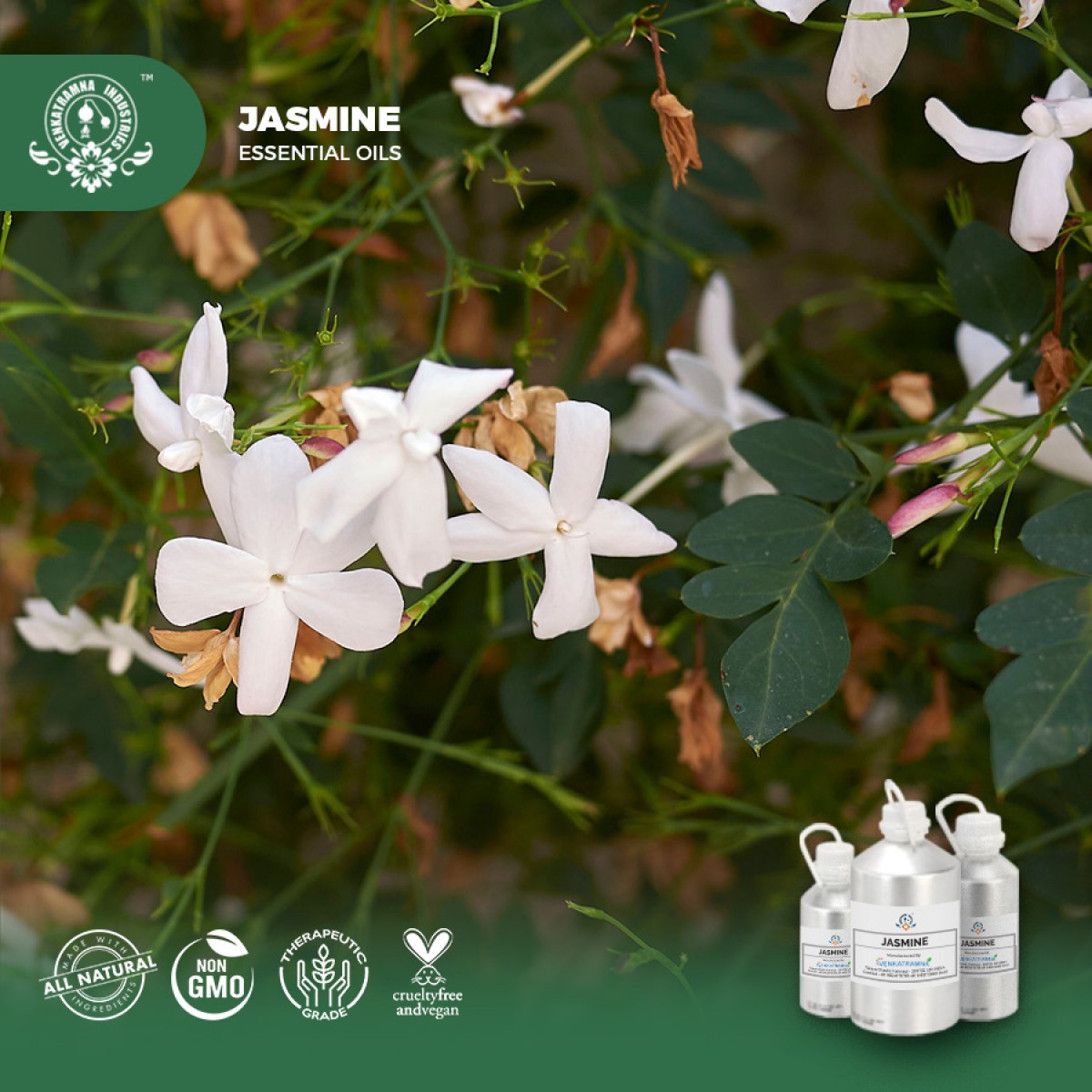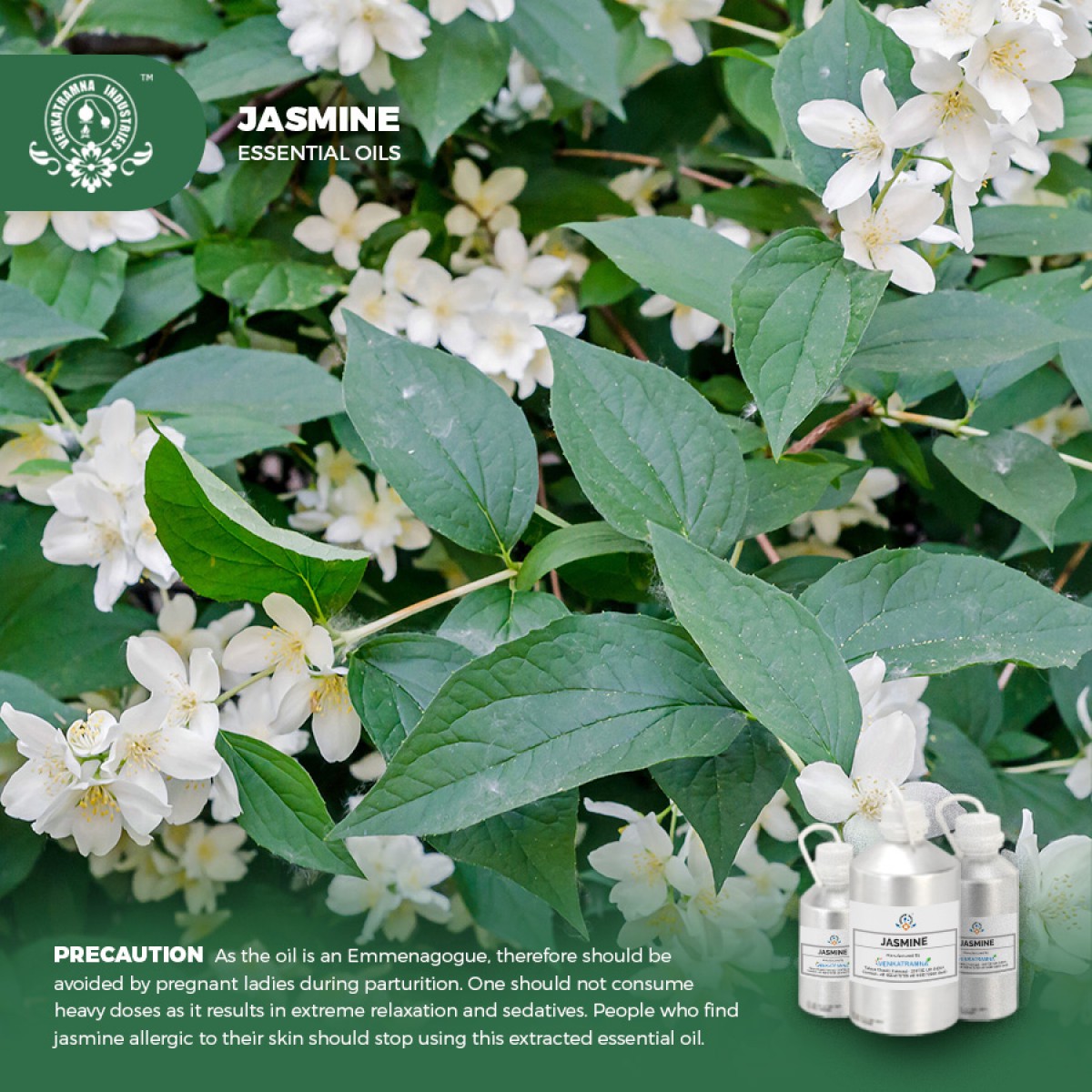Botanical Name: Jasminum grandiflorum Common name: Jasmine Plant f Read More
|
Botanical Name: |
Jasminum
grandiflorum |
|
Common name: |
Jasmine |
|
Plant family: |
Oleaceae |
|
Genus: |
Jasminum |
|
Appearance/Color: |
Orange to brown
colored liquid |
|
Odor: |
exotic and warm floral
fragrance that spreads a mesmerizing fresh and slightly fruity aroma. |
|
Blends With: |
Sandalwood,
Bergamot, Rose and Citrus Fruits like Lemon, Oranges, Lime, Grapefruits. |
|
Origin: |
India |
|
Source: |
Flowers |
|
Method of
Extraction: |
Steam Distillation |
Jasmine essential oil lies in the
luxurious oil category which is rare to find. It possesses a sweet and soothing
aroma which is retrieved from the fresh white jasmine flowers. The precisely
extracted oil has various application areas.
In cosmetic and perfume sectors, manufacturers use it to add magnetizing fragrance to the soaps and shampoos. Jasmine has a wide scope to be used to add fascinating aroma to the products. Along with that, it also has plenty of therapeutic benefits in the medical industry. This makes it the best essential oils range for calming the mind and treating depression. It not only aids to uplifts the spirits but also combats with the negative effects of anxiety. Over the years, jasmine oil has been used as a complete remedy to fight against low libido and insomnia.
DISCLAIMER
The complete range of conditions
or methods of use are beyond our control therefore we do not assume any
responsibility and expressly disclaim any liability for any use of this
product. Information contained herein is believed to be true and accurate however,
all statements or suggestions are made without warranty, expressed or implied,
regarding accuracy of the information, the hazards connected with the use of
the material or the results to be obtained from the use thereof. Compliance
with all applicable federal, state, and local laws and local regulations
remains the responsibility of the user.
The FDA has not evaluated the
statements on this website. No claims are made by Venkatramna Industries as to
the medicinal value of any products from vriaroma.com or by us. The information
presented here is for educating our customers about the traditional uses of
essential oils and is not intended to diagnose, treat, cure, or prevent any
disease. You are responsible for understanding the safe application of these products.
If you have any questions, please call or email us for further information.
As per NAHA guidelines, New Directions Aromatics
(NDA) does not recommend the ingestion of essential oils. It is imperative to
consult a medical practitioner before using Essential Oils for therapeutic
purposes. Pregnant and nursing women and those taking prescription drugs are
especially advised not to use this product without the medical advice of a
physician. The oil should always be stored in an area that is inaccessible to
children, especially those under the age of 7.
The
Jasmine oil has various pharmaceutical applications, the raw oil is used over
skins for therapeutic treatments. It
also has plenty of therapeutic benefits in the medical industry. This makes it
the best essential oils range for calming the mind and treating depression. It
not only aids to uplifts the spirits but also combats with the negative effects
of anxiety.
In
aromatherapy, inhaling jasmine essential oil molecules (or absorbing jasmine
oil through the skin) is said to transmit messages to a brain region called the
limbic system. This area is involved in controlling emotions and influences the
nervous system. Jasmine oil promotes a healthy-looking, glowing complexion and reduces
the appearance of blemishes, fine lines, and wrinkles. It can be applied to the
scalp to nourish and protect the skin.
The exquisite aroma of
Jasmine flowers encourages feelings of romance, euphoria, joy, and splendour.
With Jasmine oil, you can carry the captivating fragrance of Jasmine absolute
in your pocket anywhere you go.
COMMON USAGE
·
Reduces depression
·
Preventive for infections
·
Fades away scars
·
Promotes sexual desires
·
Cures cough & congestion
·
Helps in Insomnia
·
Absolute skin care remedy
·
Facilitates lactation
·
Eases & stimulates childbirth
·
Acts as Emmenagogue
·
Excellent sedative
Ingredients:
|
S.No |
Key Constituents |
Strength (%) |
|
1 |
Benzyl acetate |
15.0–24.5 |
|
2 |
Phytol |
7.0–12.5 |
|
3 |
Squalene 2,3-oxide |
5.8–12.0 |
|
4 |
Benzyl benzoate |
8.0–20.0 |
|
5 |
Isophytol |
5.0–8.0 |
|
6 |
Linalool |
3.0–6.5 |
|
7 |
Squalene |
2.5–6.0 |
|
8 |
Phytyl acetate |
3.5–7.0 |
|
9 |
Geranyl linalool |
2.5–5.0 |
|
10 |
Methyl benzoate |
0.2–1.0 |
|
11 |
Indole |
0.7–3.5 |
|
12 |
(Z)-Methyl jasmonate |
0.2–1.3 |
|
13 |
Jasmolactone |
0.3–1.2 |
|
14 |
(Z)-Jasmone |
1.5–3.3 |
|
15 |
Eugenol |
1.1–3.0 |
As the oil is an Emmenagogue,
therefore should be avoided by pregnant ladies during parturition. One should
not consume heavy doses as it results in extreme relaxation and sedatives.
People who find jasmine allergic to their skin should stop using this extracted
essential oil.
Organ-specific effects: no data available
Systemic effects
·
Acute toxicity: No data available.
·
Skin corrosion/irritation: May be
irritating to skin.
·
Serious eye damage/irritation: May be
irritating to eyes. Prompt rinsing and removal of the substance will avoid
damage.
·
Respiratory sensitization: Breathing high
concentrations of vapor may cause anesthetic effects.
·
Germ cell mutagenicity: Not specified
·
Carcinogenicity:
IARH: No component of this product present at levels
greater than or equal to 0.1% is identified as probable, possible or confirmed
human carcinogen by IARC.
ACGIH: No component of this product present at levels
greater than or equal to 0.1% is identified as probable, possible or confirmed
human carcinogen by IARC.
NTP: No component of this product present at levels
greater than or equal to 0.1% is identified as probable, possible or confirmed
human carcinogen by IARC.
OSHA: No component of this product present at levels
greater than or equal to 0.1% is identified as probable, possible or confirmed
human carcinogen by IARC.
·
Reproductive toxicity: Not specified
·
STOT-single exposure: Not specified
·
STOT-related exposure: Not specified
·
Aspiration hazard: Not specified
·
Aquatic Toxicity: toxic to aquatic life with long lasting
effects
·
Bioaccumulation: unlikely
·
Mobility in soil: No data available
·
Persistence and degradability: biodegradation
expected
·
PBT and vPvB assessment: No data available
·
Other adverse effects: Do not allow it to enter
into water systems and marine environment.





 MSDS-jasmine.pdf
MSDS-jasmine.pdf




